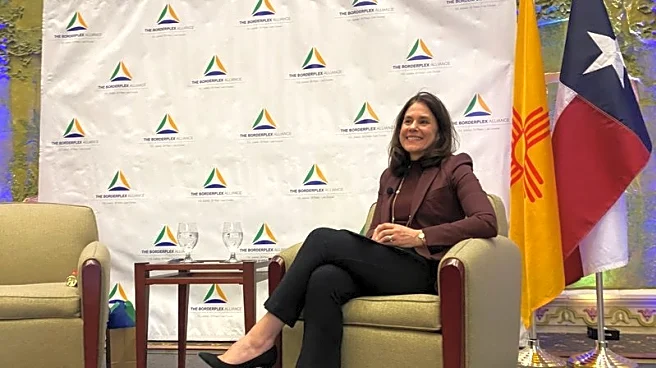What's Happening?
Federal Reserve Bank of Dallas President Lorie Logan has called for a modernization of the central bank's approach to managing money market conditions. Logan suggests shifting the focus from targeting the federal funds lending market to managing liquidity to control the tri-party general collateral rate (TGCR). This proposal comes as the Fed faces challenges in maintaining its interest rate target, with liquidity conditions expected to tighten and cash flooding into Fed liquidity facilities. Logan emphasizes that targeting the TGCR is the best option due to its active market and effective control by existing Fed tools.
Why It's Important?
Logan's proposal to overhaul the Fed's rate control toolkit is significant as it addresses potential vulnerabilities in the current system. By targeting the TGCR, the Fed aims to enhance its ability to manage monetary policy objectives amid evolving market conditions. This shift could impact how the Fed navigates interest rate targets, influencing financial markets and economic stakeholders. The proposal highlights the need for adaptive strategies in response to changing liquidity dynamics, which could affect the Fed's ability to achieve its employment and inflation mandates.
What's Next?
The Federal Reserve may consider implementing Logan's proposed changes to its rate control toolkit, potentially leading to adjustments in monetary policy strategies. Stakeholders, including financial institutions and market participants, will be closely monitoring these developments to assess their impact on money market conditions and interest rate targets. The Fed's ability to manage liquidity effectively will be crucial in maintaining market stability and achieving its policy objectives.
Beyond the Headlines
Logan's call for reform reflects broader discussions on the effectiveness of traditional monetary policy tools in a rapidly changing financial landscape. The proposal may prompt debates on the role of the Fed in managing market conditions and the need for innovative approaches to address emerging challenges. As the Fed navigates these changes, stakeholders will be considering the long-term implications for monetary policy and financial stability.











